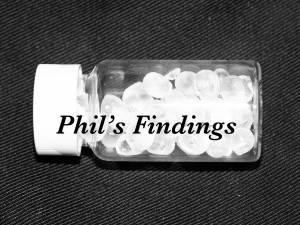Phil’s Findings #14: Rubber
05 September 2011

.jpg)
Phil Howes, the Institute of Making’s post-doc researcher, shares his thoughts and findings as he delves into the sensoaesthetic world of materials. Check this space every Monday for Phil's latest posting.
The native cultures of Central America are thought to have been the first people to make use of the extraordinary properties of natural rubber. The rubber, which they would tap from specific types of trees, was used to make various things including shoes, water carriers, and balls to play games with. Columbus observed how these native peoples were using natural rubber in his voyages in the fifteenth century, however it wasn’t until the eighteenth century that rubber and rubber trees were brought back to Europe and seriously experimented upon. The word rubber wasn’t coined until 1770, when its ability to ‘rub out’ pencil marks was first noticed. Natural rubber has some unfortunate properties which traditionally limited its use. When heated, it would become very sticky and lose its structure, but when it was cooled it became hard and brittle. In 1839, inventor Charles Goodyear invented a chemical process called vulcanisation which allowed natural rubber to be turned into a much more tough and durable material. This vulcanised rubber was put to many uses, not least in tyres for vehicles. Nowadays, there are many different formulations of rubber. Many are still derived from natural rubber, while others are chemically synthesised and derived from oil.
When the rubber tree is tapped, a white liquid called a latex bleeds from a fresh cut in the bark, the major constituent of which is a small carbon based molecule called isoprene. When the latex is left to dry, these isoprene molecules begin to bind to one another and form long chains, called polyisoprene. It is the structure of these long chain polymers, and their relationship with one another, which gives rubber the ability to stretch and bend without breaking. The long chains are all intertwined and entangled, and they are quite happy to sit coiled up together due to an electrostatic attraction between them. When rubber is stretched, the individual polymer chains are stretched too, but the attraction between the chains is enough to keep them stuck to one another, such that when you release the rubber, all the chains pull back to their original positions.
If you heat natural rubber, the polymer chains get excited and start jiggling around. As the chains have an increased energy, they are able to overcome the electrostatic forces holding them together and start moving around, which is why hot rubber becomes sticky and loses its structure. When the rubber is cooled down, the electrostatic forces begin to dominate and the chains cannot move, causing the whole thing to become hard and brittle. The vulcanisation processes introduces permanent and strong links between the polymer chains, such that the rubber is less affected by changes in temperature. Natural rubber would be useless for making car tyres as there would only be a small temperature window in which it was usable, however vulcanised rubber stays strong and elastic over a much wider temperature range.